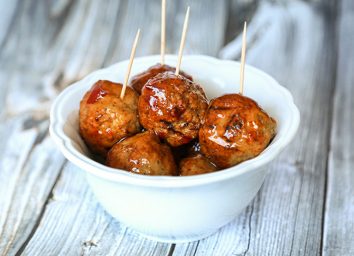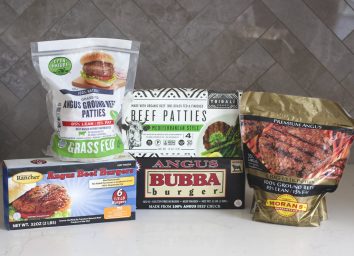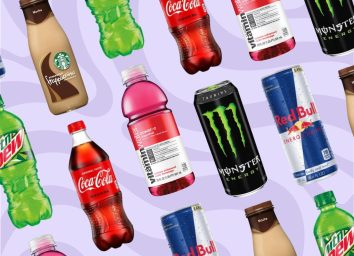16 Foods With Secret Ingredients
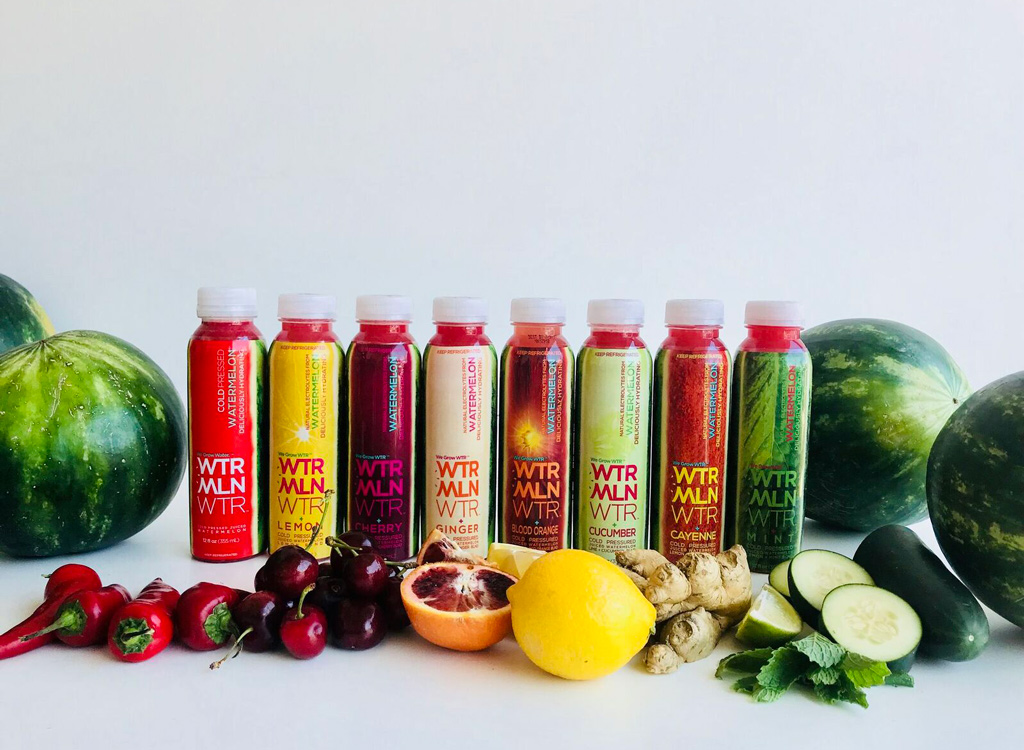
Given rising food trends, sustainability, food waste awareness—or just bearing a goal to achieve the perfect flavor balance—many companies have been stealthily spiking their foods with secret ingredients. From baking crunchy chips with upcycled veggies to spiking portable snack bars with leftover beer grains, these 16 brands below offer up some pretty unexpected eats. Even some of our go-to drive-thrus add odd ingredients to the world’s most popular fast food dishes!
And just as some labels don’t disclose the surprising ingredients in their recipes, what’s even more jarring is that some products actually fail to adhere to their eponymic labels. (Starbucks and Snapple, we’re looking at you!) Read on to find out which foods and beverages sneak in secret ingredients.
Regrained Supergrain Bars
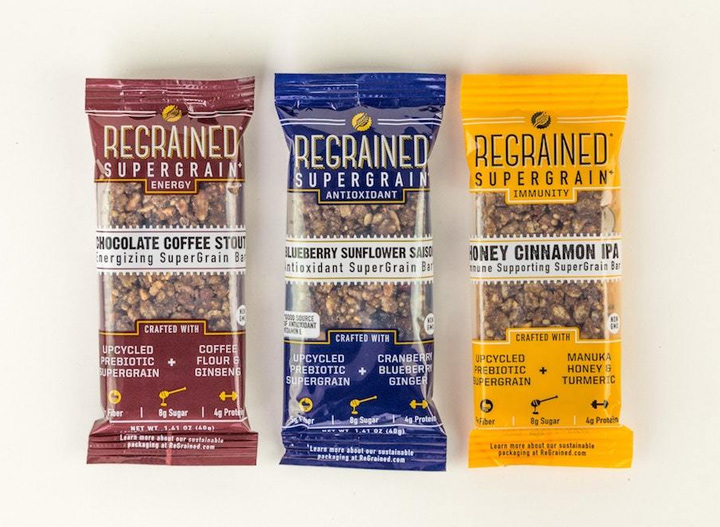
After two UCLA undergrads circumvented the legal drinking age by brewing their own beer, they stumbled upon an innovative idea to use the leftover spent grain. In 2013, Regrained created their first portable snack bar, baked with the nutrient-rich grains. Now, the line features three boozy flavors: Honey Cinnamon IPA, Blueberry Sunflower Saison, and Chocolate Coffee Stout—which hides upcycled, caffeine-rich coffee fruit.
Taco Bell Beef
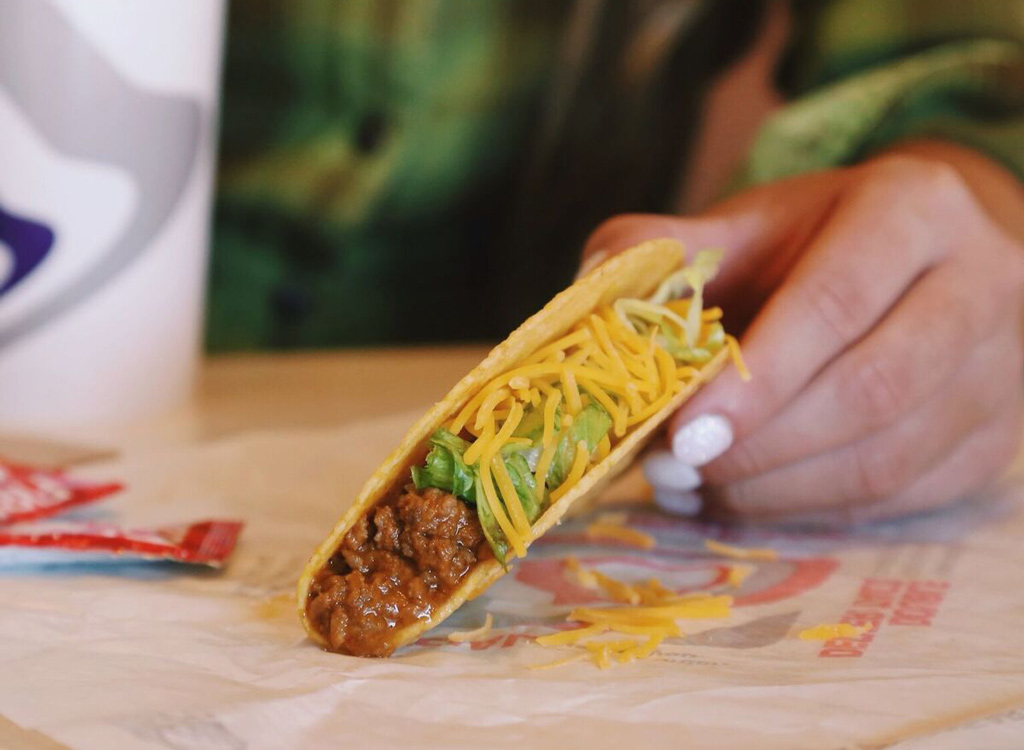
One glance at the Bell’s menu and you’ll notice that a good chunk of the offerings, from the best-selling tacos to the Crunchwraps and Chalupas, feature the chain’s juicy beef. And one glance at the ingredient list reveals exactly why. The seasoned beef is spiked with flavors such as chili pepper, onion powder, and the most surprising, cocoa. Apparently, chocolate is often used in Mexican cooking to add depth and helps balance beef’s natural fatty flavor.
¡Yappah! Protein Crisps
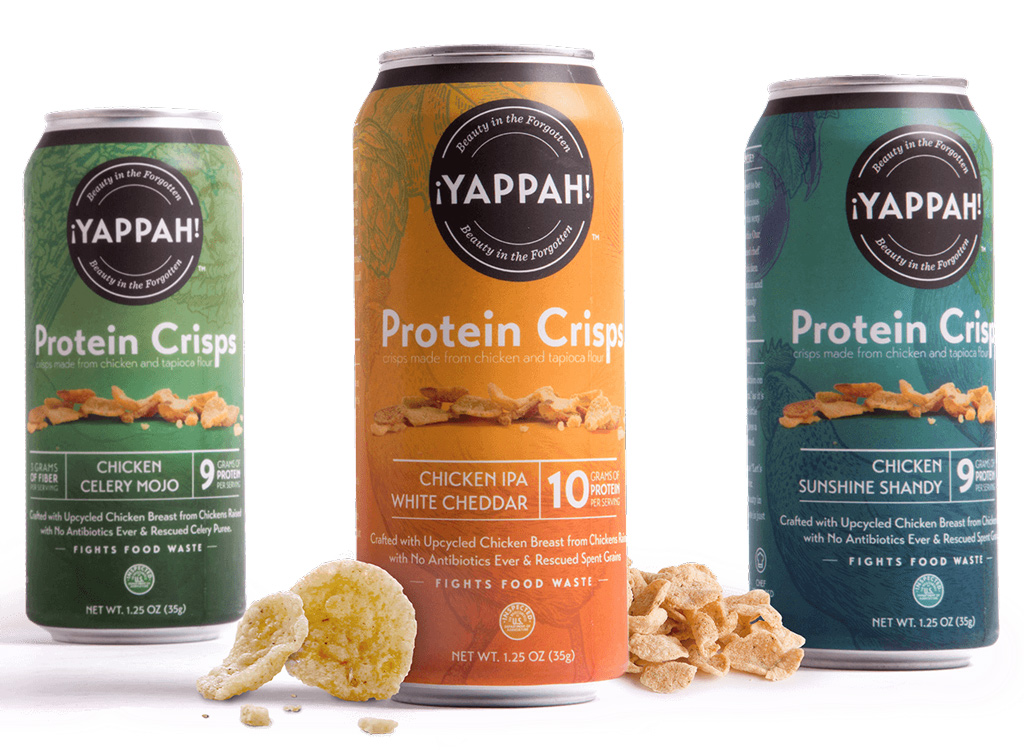
In an effort to scale back on global food waste, Tyson Foods launched a new brand dubbed ¡Yappah! that offers protein crisps and other snacks crafted from upcycled ingredients such as chicken breast trim, Molson Coors spent grain from beer brewing and leftover veggie puree from juicing. “People might not realize that vegetable pulp left behind during juicing is arguably better and richer tasting than the juice itself, and spent grain is surprisingly delicious. So, we had these amazing flavors to work with,” Chef Kang Kuan, Executive Chef at Tyson Innovation Lab, said. “The result is a crispy snack that comes in four culinary-driven flavors that will appeal to all food lovers.”
McDonald’s Fries
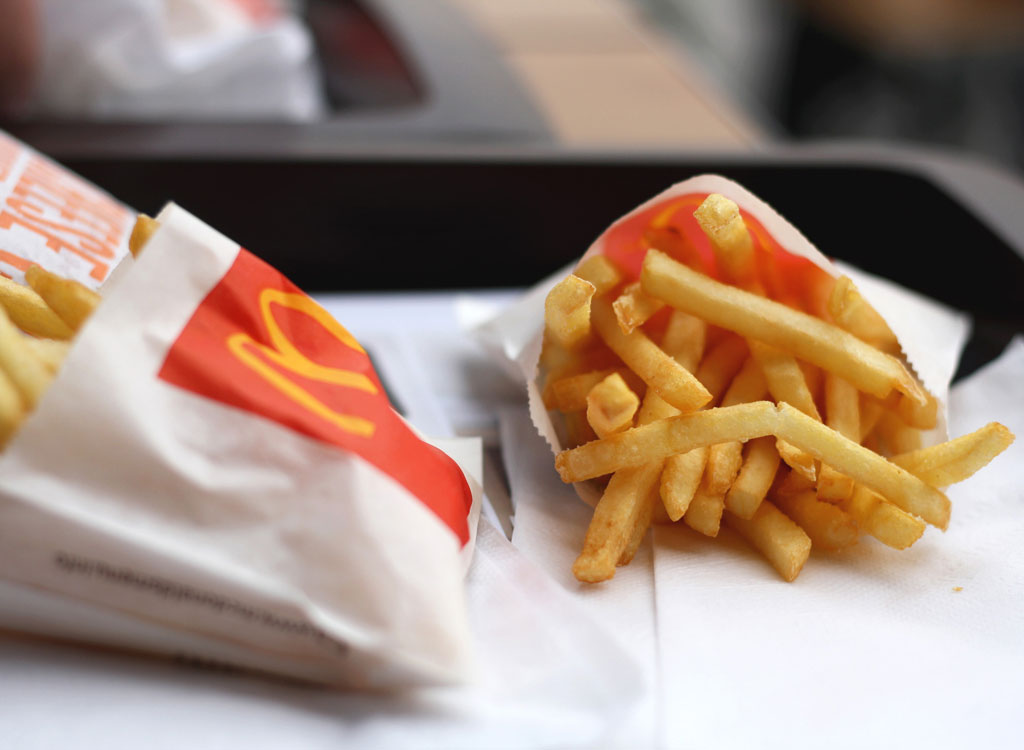
If you think about it, French fries are a naturally vegan treat. The crispy spuds are traditionally made with three simple ingredients including potatoes, salt, and oil. However, Mickey D’s chooses to sneak in natural beef flavor for an addicting umami kick. This unexpected ingredient is made of hydrolyzed wheat and hydrolyzed milk, both of which undergo a process that produces MSG—a flavor enhancer that’s been linked to increased appetite. No wonder why this salty snack is so addicting.
Caulipower Paleo Crust

A key component of the Paleo lifestyle is to avoid grains, but many dieters are left feeling deprived of the starchy yet fiber-rich foods they used to indulge in. That’s why Caulipower set out to create the first-ever frozen paleo cauliflower pizza crust. And while it sticks to its roots with cauliflower as the first ingredient, the brand sneaks in something a little less expected: honey. Raw, unprocessed honey is a Paleo-approved sweetener, but we’re wondering why Caulipower opted for adding it to its grain- and gluten-free crust when its original plain crust doesn’t contain any sweeteners.
La Croix
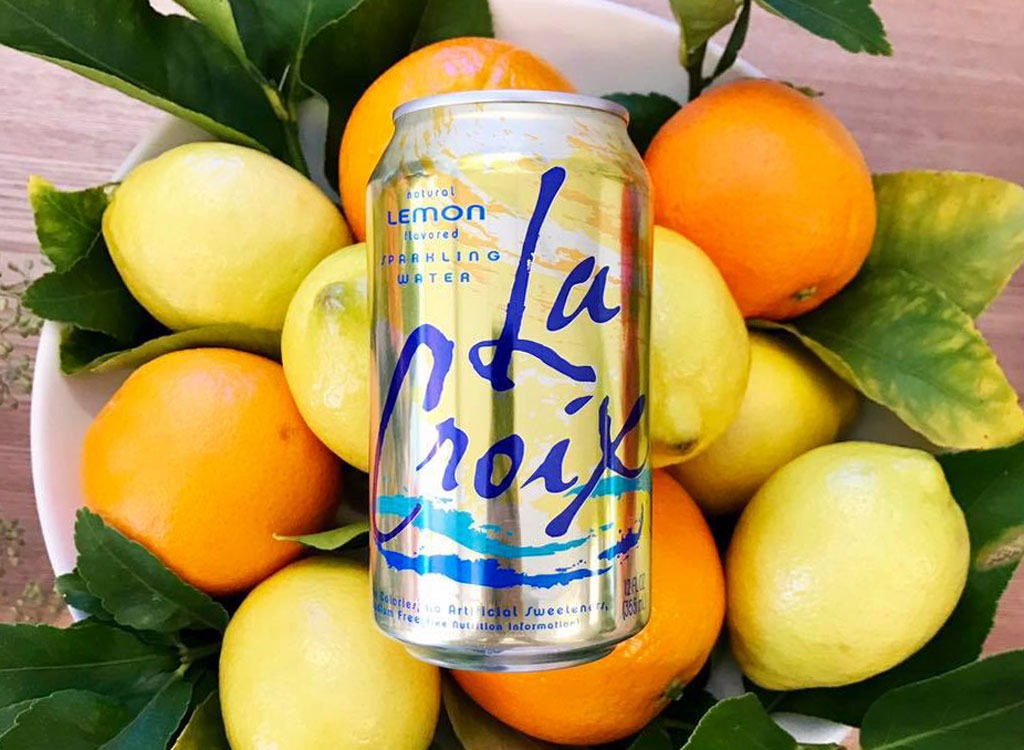
La Croix openly states that it does without sodium and sweeteners, so it’s only natural for bubble enthusiasts to wonder what flavors the fruity cans. Picks like Pamplemousse and Key Lime get their signature taste from “natural essence,” a concentrated chemical extracted from fruits.
Spindrift
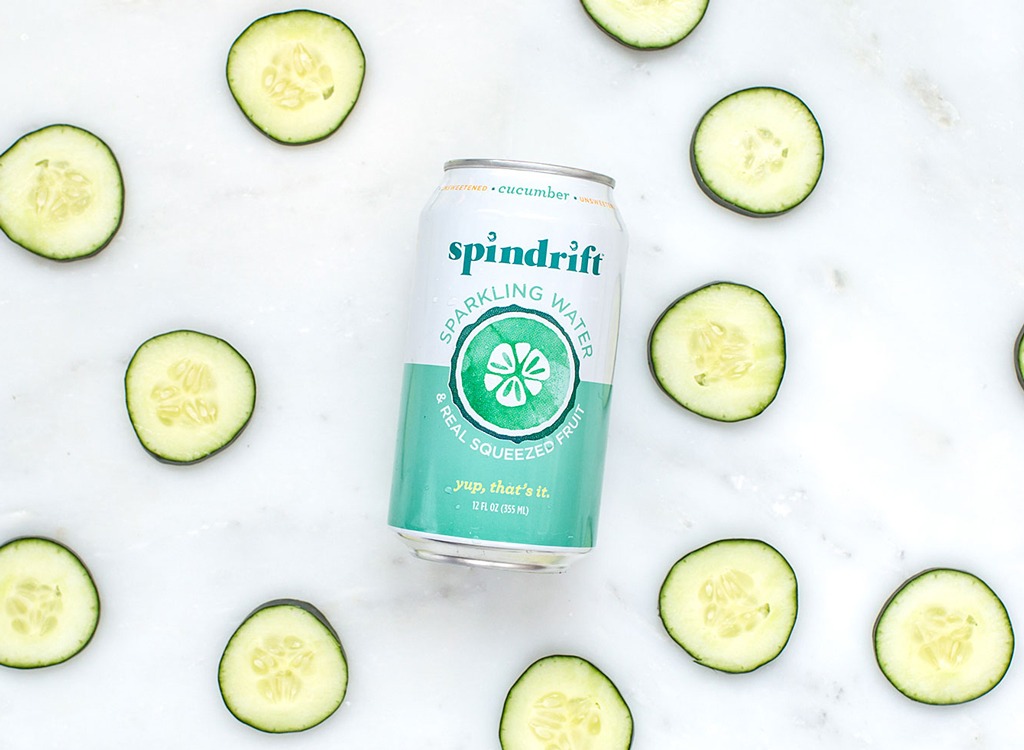
Spindrift’s tagline, “Yup, that’s it” refers to the two simple ingredients it uses in its bubbly H2O: sparkling water and real fruit juice. So, it’s no surprise that the Boston-born brand uses real fruit juice rather than natural essence other sparkling waters rely on. But what did catch us off guard was the natural dyes used to color the bev. The Grapefruit can adds in hibiscus for color while other cans use fruit juice as well as fruit puree.
Canned Pumpkin
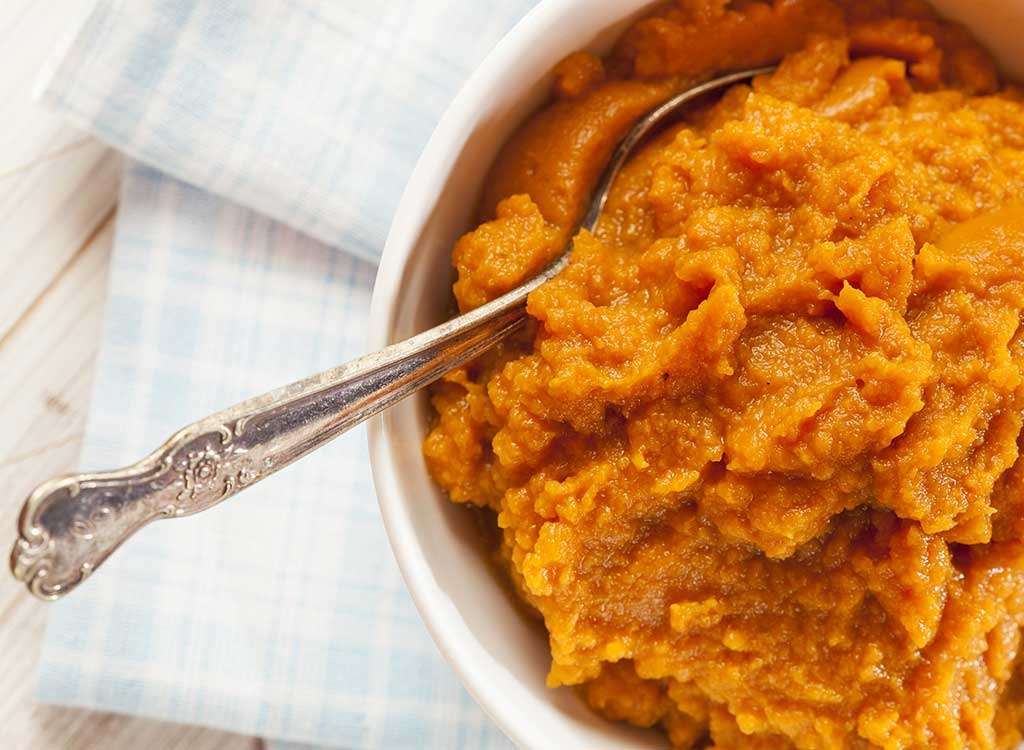
If you’re planning to bake some pumpkin spice treats to welcome the start of fall, you probably penned cinnamon, nutmeg, and canned pumpkin onto your grocery list. But if you’re using the canned stuff, you may not be getting any pumpkin at all. Libby’s Pure Pumpkin, the brand that’s probably in your pantry right now, actually uses Dickinson squash in its puree even though the ingredient lists 100 percent pure pumpkin. How is Libby’s able to get away with this? Well, the FDA allows companies to label their products as pumpkin if they include golden-fleshed, sweet squash, or mixtures of such squash with field pumpkins.
Truffle Oil

Real truffles are pretty hard to come by. They require domestic pigs to hunt down the tubers. The expensive and time-consuming process gave rise to the production of synthetic truffle, which is what the majority of truffle-flavored fries and condiments tend to use. This pseudo fungus is actually a chemical called 2,4-dithiapentane, also known as bis(methylthio)methane.
Garden Veggie Straws
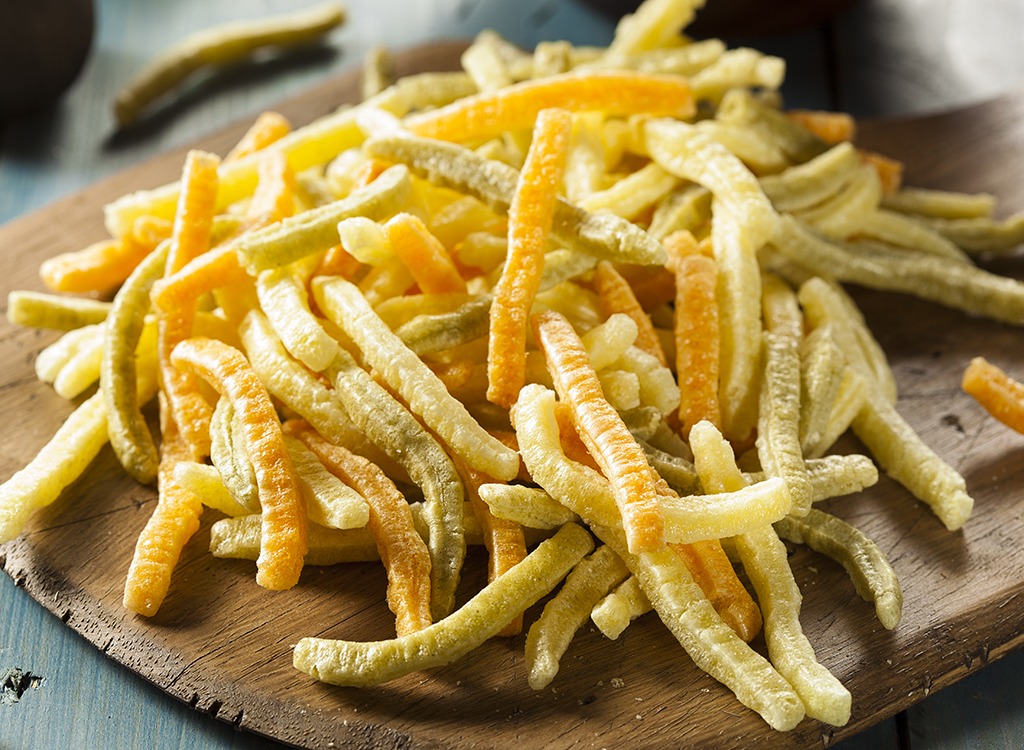
Many of us are guilty of grabbing a bag of veggie straws over Lay’s, but it turns out that you’d probably get more produce if you pick the potatoes. Hain Celestial Group, the makers of Garden Veggie Straws, are tied up in a lawsuit because they don’t actually contain any vegetables. The snack’s ingredient list lists potato flour, potato starch, corn starch, tomato paste, and spinach powder.
“Although the marketing and labeling of the Garden Veggie Straws depict whole tomatoes, spinach leaves, and potatoes … there are no garden-grown or ripe vegetables in the Garden Veggie Straws,” the lawsuit states. “Instead, the Vegetable Straws contain highly processed byproducts of what were once vegetables, and with respect to tomatoes and spinach, only contain trace amounts of those byproducts upon information and belief.”
Snapple Raspberry Peach
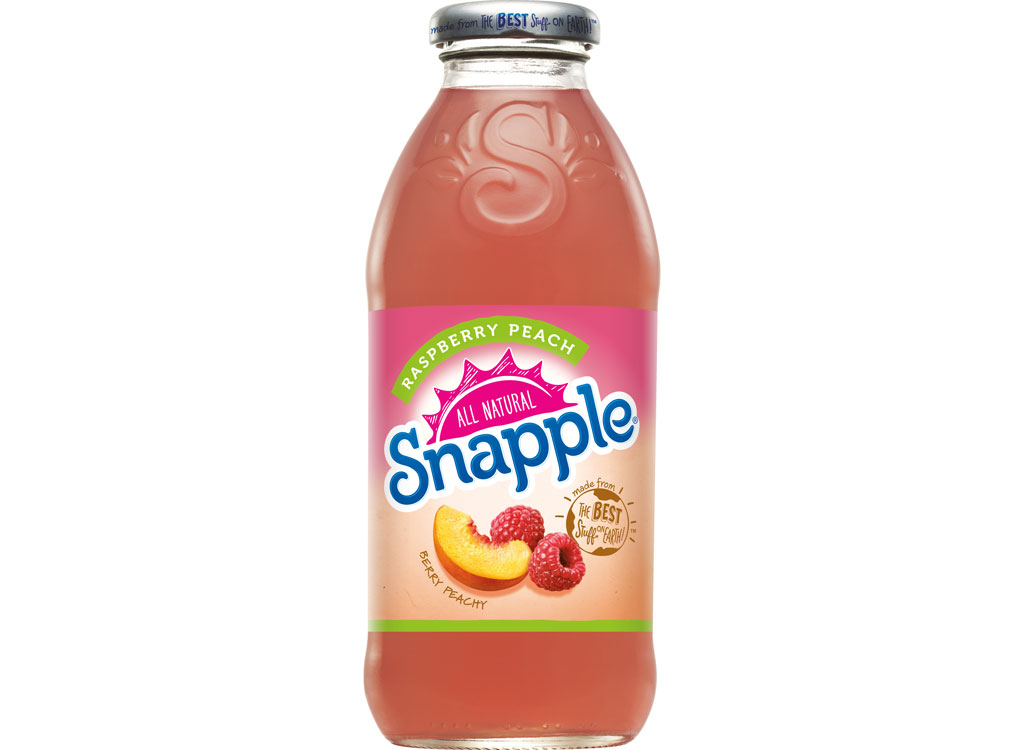
Snapple’s line of teas and fruit juices usually match the flavors colorfully pictured on the labels with their respective ingredient lists. But that’s not the case with the raspberry peach bottle. The ingredient list contains filtered water, sugar, pear juice concentrate, peach puree, citric acid, natural flavors, vegetable juice concentrate (for color), and acacia gum. Where’s the raspberry? If we were to guess, we’d say Snapple tried to gyp drinkers out of real raspberry juice by subbing it with obscure “natural flavors.”
White Chocolate
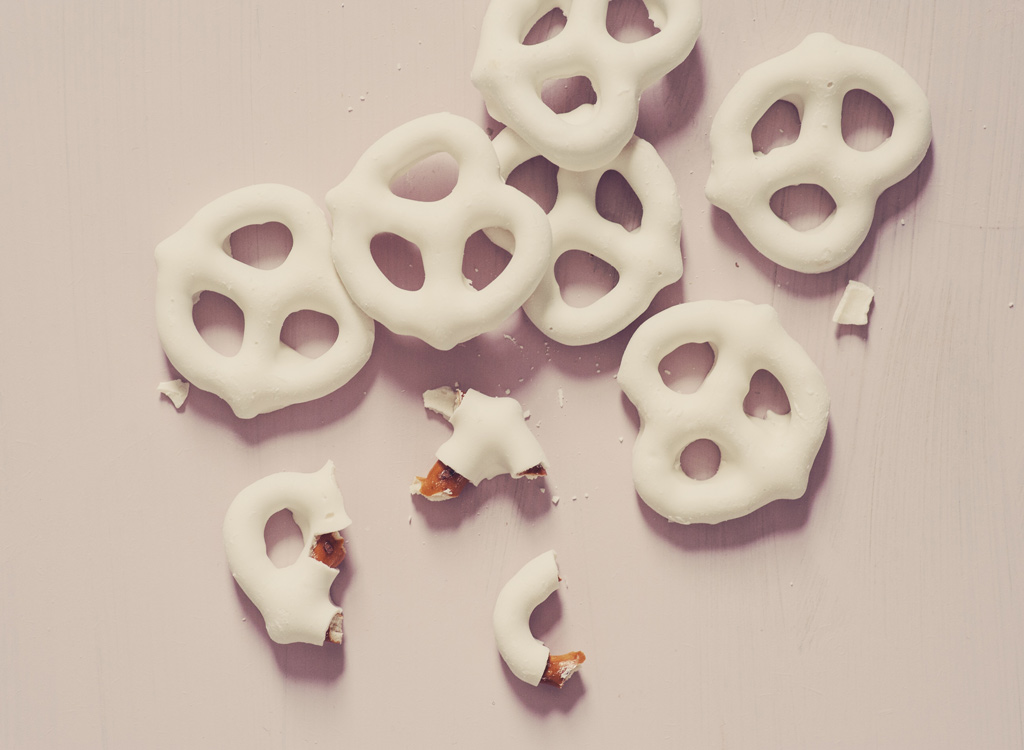
Many dessert lovers dub white chocolate as a white lie—and for good reason. The sweet snack is made up of cocoa butter rather than actual cacao, which is where dark and milk chocolates get their signature flavor from. (The darker the chocolate, the higher the antioxidant-rich cacao content.) According to the FDA, white chocolate contains no less than 20 percent cacao fat and the remaining makeup is just a slew of milkfat, milk solids, and carby sweeteners. Since white chocolate doesn’t contain actual cacao, you’re basically just eating sweetened, fat-laden cocoa butter.
Sweet Potato Good Thins
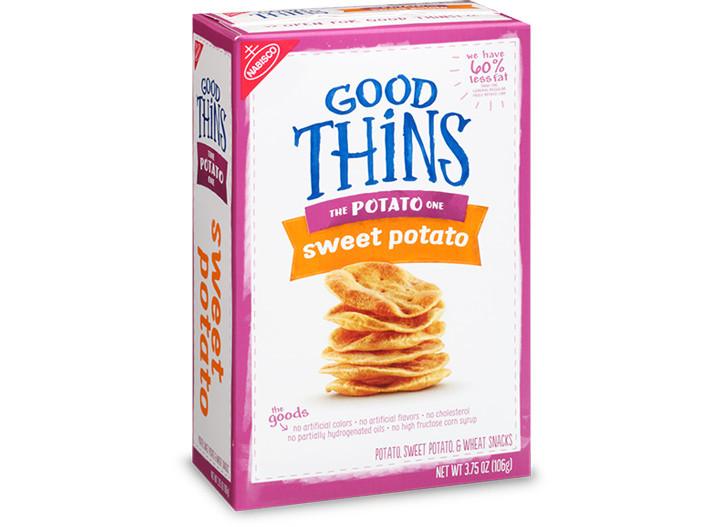
Good Thins boasts that its sweet potato chips are free of partially hydrogenated oils, artificial colors, artificial flavors, and high fructose corn syrup. And it turns out that these crisps are also free of actual sweet potato. The first two and most abundant ingredients are potato flour and cornstarch, and the third ingredient is sweet potato powder.
WTRMLN WTR
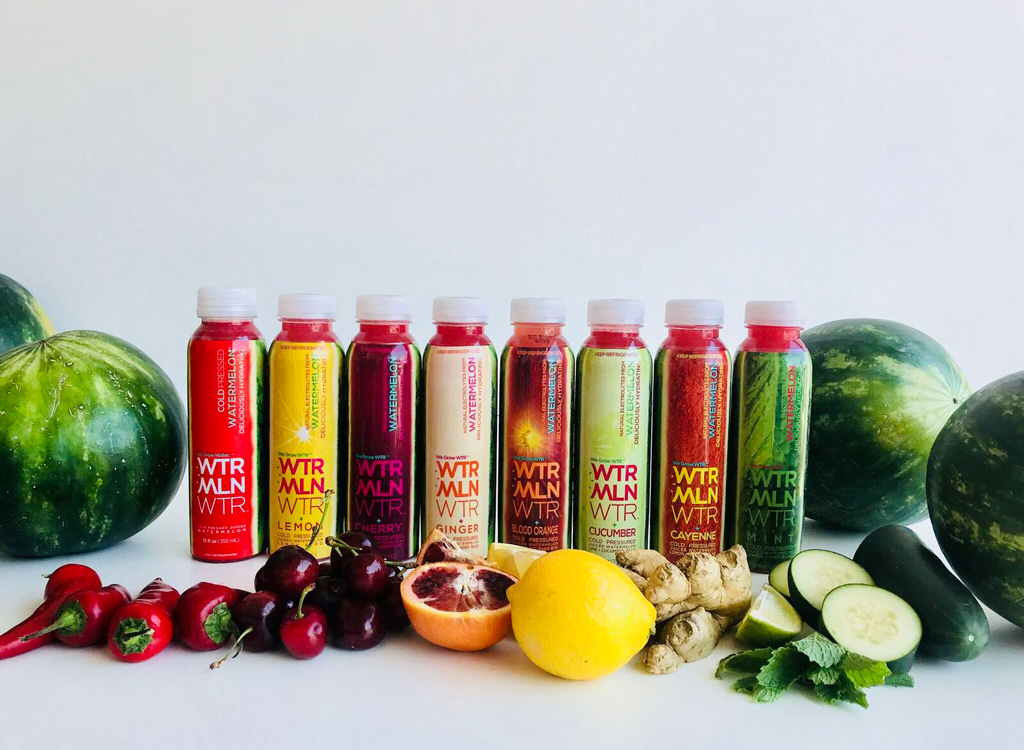
It’s no secret that WTRMLN WTR is made from watermelon, but did you know that the brand sources “ugly” fruit only? Both the flesh and rind are used in the juice and whatever’s left is used to supply animal feed to local farms. Talk about sustainability! “In 2013, my co-founder Harlan Berger shared this crazy fact that there are hundreds of millions of pounds of ugly, misshapen but perfectly nutritious ‘waste’ watermelons in the United States annually,” Jody Levy, CEO and Co-Founder of WTRMLN WTR tells us. “Harlan and I came up with this idea to create a beverage out of this upcycled waste stream.”
Forager Project Chips
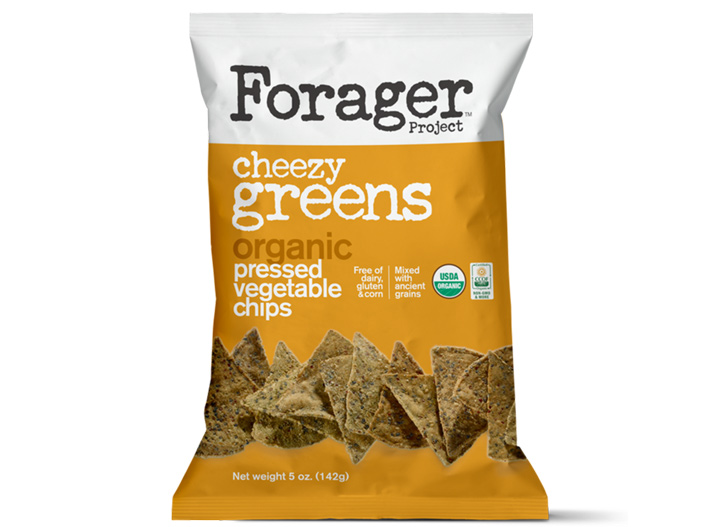
The best part about Forager’s mouthwatering juices is the fact that the company reuses leftover pulps to create crunchy chips. The organic Cheezy Greens chips are baked with rehydrated pressed vegetables such as cucumber, celery, kale, spinach, romaine, collards, fennel, parsley, and basil. And the satiating snack gets its “cheezy” flavor from dairy-free nutritional yeast (also known as nooch), which provides plant-based complete protein.
Starbucks Mango Dragonfruit Refresher
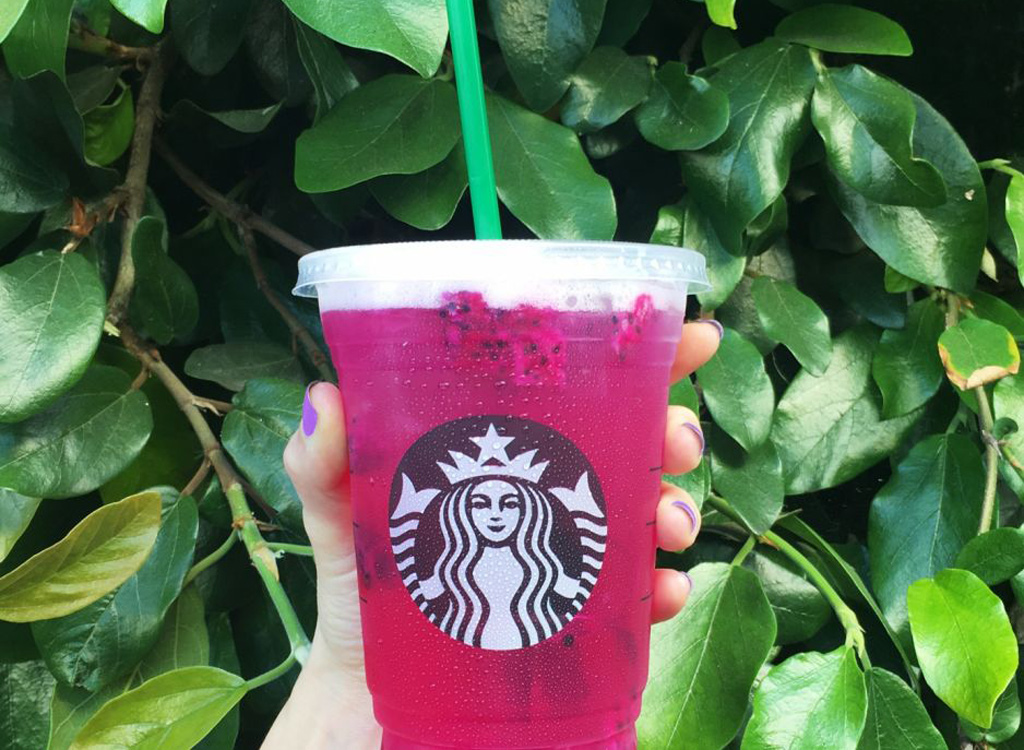
After announcing plans to focus on beverages and scale down on seasonal items, Starbucks debuted its Mango Dragonfruit Refresher in summer 2018. Based on the drink’s name, you’d expect to find at least two ingredients in the concoction: mango and dragonfruit. However, much like Snapple’s raspberry peach flavor, Sbux excluded mango. Instead, it uses a syrupy base that includes white grape juice concentrate and natural flavors.
